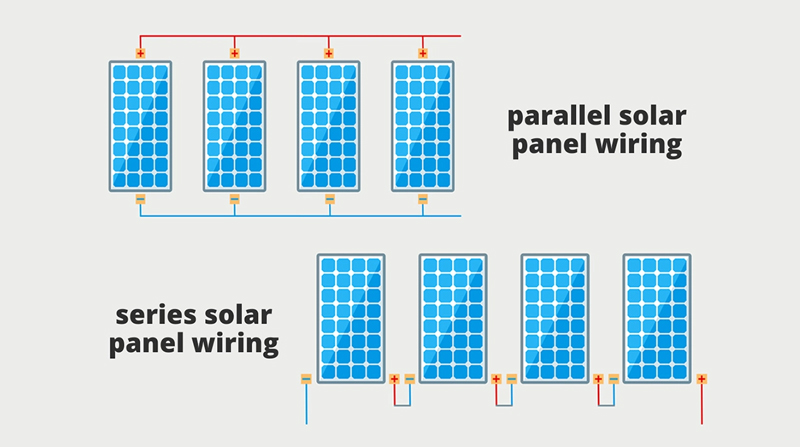Contents:
Solar power systems are fundamentally impacted by the electrical configuration of their solar panels. Whether arranged in series or in parallel, each setup has its particular benefits and constraints, influencing the system's overall efficiency, design complexity, and performance under varying conditions. This comprehensive examination delves into the series and parallel configurations of solar panels, providing insights that help homeowners and businesses make informed decisions about their solar installations.

When solar panels are connected in series, the positive terminal of one panel is connected to the negative terminal of the next panel. This chain-like connection increases the overall voltage output of the panel array while maintaining the same current level as that of a single panel.
Advantages of Series Configurations:
- Higher Voltage Output: The voltage sums up with each panel added, which is beneficial for systems requiring high voltage, reducing the current carried over distances, thereby minimizing line losses.
- Reduced Wiring Complexity: Series connections require fewer wires and connections, simplifying the design and potentially reducing installation costs.
Disadvantages of Series Configurations:
- Shading Sensitivity: The output of all panels drops to the lowest performing panel in the series, making them particularly vulnerable to shading or soiling.
- Compatibility Issues: All panels in series must have compatible electrical characteristics to ensure efficient performance, which can be challenging in mixed panel setups.
In a parallel configuration, all positive terminals are connected together, and all negative terminals are also connected together. This method keeps the voltage constant at the level of one panel but increases the overall current of the array.
Advantages of Parallel Configurations:
- Increased Current Output: This is suitable for applications needing high current at a stable voltage, such as in residential solar systems where space may be limited.
- Less Impact from Shading: If one panel is underperforming, it does not significantly affect the output of other panels in the array.
Disadvantages of Parallel Configurations:
- Increased Wiring Requirements: This setup requires more wires and connections, which can complicate the installation and increase costs.
- Higher Potential for Voltage Discrepancies: Ensuring that all panels operate at the same voltage can be challenging, especially in larger arrays where voltage drops could be more pronounced over long wire runs.

The choice between series and parallel configurations depends on several factors, including installation environment, budget, and specific power requirements. Here’s a comparison based on common parameters:
| Feature |
Series Connection |
Parallel Connection |
| Voltage |
Increases with each panel |
Remains constant |
| Current |
Remains constant |
Increases with each panel |
| Wiring Complexity |
Lower |
Higher |
| Impact of Shading |
High |
Lower |
| Best Used For |
High-voltage applications |
High-current applications |
The differences in how voltage and current change in series and parallel configurations.







